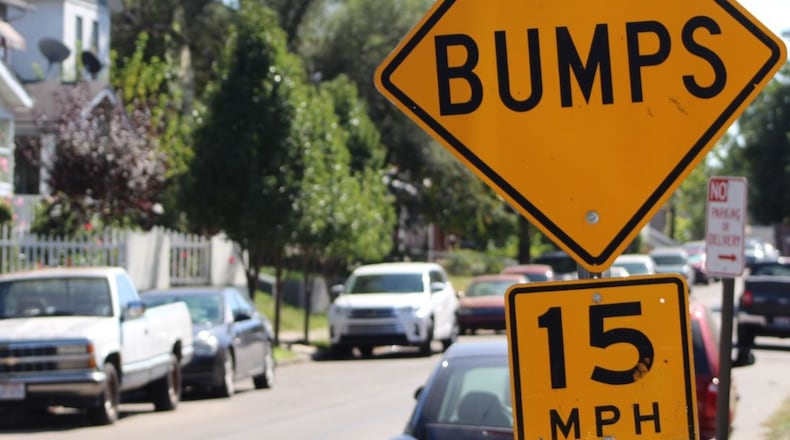However, the annual opinion poll does indicate that a shrinking share of residents are displeased with the quality of city streets and sidewalks.
City officials say they believe that years of infrastructure investments are paying off.
“This year we saw fewer people are expressing dissatisfaction, which is a great move in the right direction,” said Jennifer Custer, a management analyst II with Dayton who helped manage the city survey. “The overall sentiment has become more positive, as they are starting to see those investments that we’re making in city infrastructure.”
Survey says
Last year, about 52% of Dayton residents said they were dissatisfied or very dissatisfied with the quality of the city’s streets, sidewalks and pavement, says the recently released results of the 2024 Dayton survey.
Resident dissatisfaction with city roads and sidewalks dropped more than 8 percentage points from 2023, the fourth survey in a row that showed a decline in dissatisfaction.
About two-thirds of residents said they were unhappy with streets, sidewalks and pavement in the 2019 survey, which was the last time resident dissatisfaction in this area rose.
The 2024 survey also found that 23% of Dayton residents said they are satisfied or very satisfied with road and sidewalk conditions. That was the highest satisfaction level on record, going back to 2017.
When the city was campaigning for passage of the 2016 income tax increase, then-Mayor Nan Whaley promised significant improvement in street quality over eight years if the levy passed. City Manager Shelley Dickstein said almost 80 percent of the city’s residential streets would be resurfaced by the end of the eight-year tax period.
City officials did not respond this week to detailed questions about road paving, including how the city’s pavement quality rating has changed in recent years.
The city spent about $7 million repaving about 47 miles of roadways in 2023.
The city repaved about 39 lane miles of residential streets and two miles of thoroughfares through the end of the third quarter of last year, said David Escobar, city engineer.
Dickstein on Wednesday said the city expects to repave about 50 lane miles of residential roadways in 2025.
The Dayton City Commission this week approved a $5.4 million contact with John R. Jurgenson Co. for the city’s 2025 street repaving program.
Daytonians obviously care about the condition of the residential streets they live on and the roads in their neighborhoods. But they also care a lot about the major thoroughfares they rely on to move throughout the city.
Escobar said the city also expects to repave nearly eight lane miles of thoroughfares this year.
In addition to repaving, the city also plans to improve streets with crack sealing and other preventative maintenance, he said.
Major infrastructure projects last year included safety upgrades to North Main Street, improvements to South Broadway Street and the reconstruction of Wayne and North Gettysburg avenues.
North Main Street was put on a road diet from Great Miami Boulevard to Shoup Mill Road and upgrades included new curb extensions and a pedestrian median.
Sidewalks and curbs on South Broadway Street were removed and replaced from Germantown Street to Nicholas Road, and the roadway was resurfaced.
Wayne Avenue was improved from Wyoming Street to Waldo Street with new left-turn lanes, sidewalks and curbs.
The city has decided to spend about $10 million of its $138 million in federal COVID relief funding to replace sidewalks and curbs in about seven neighborhoods. These are Old North Dayton, Twin Towers, Miami Chapel, Edgemont, Five Oaks, Wolf Creek and Carillon.
But not everyone is happy with the city’s infrastructure projects and decisions.
Victor Patrick, who lives on Philadelphia Drive, recently complained at a city commission meeting about the North Main Street road diet. He said the thoroughfare now has traffic jams and motorists have been using the side streets to avoid the reconfigured thoroughfare.
He said drivers have been crashing into the curb extensions and bump-outs.
About the Author

